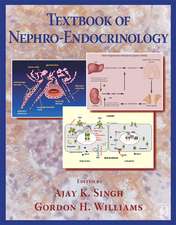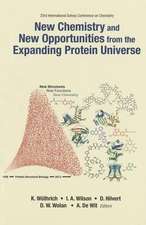Adaptability of Human Gait: Implications for the Control of Locomotion: Advances in Psychology, cartea 78
Editat de A.E. Patlaen Limba Engleză Hardback – 24 mar 1991
Din seria Advances in Psychology
- 18%
 Preț: 949.99 lei
Preț: 949.99 lei - 15%
 Preț: 457.33 lei
Preț: 457.33 lei - 23%
 Preț: 683.48 lei
Preț: 683.48 lei - 23%
 Preț: 675.31 lei
Preț: 675.31 lei - 23%
 Preț: 676.64 lei
Preț: 676.64 lei - 5%
 Preț: 839.37 lei
Preț: 839.37 lei - 5%
 Preț: 834.81 lei
Preț: 834.81 lei - 23%
 Preț: 668.19 lei
Preț: 668.19 lei - 34%
 Preț: 317.98 lei
Preț: 317.98 lei - 23%
 Preț: 674.72 lei
Preț: 674.72 lei - 20%
 Preț: 1422.35 lei
Preț: 1422.35 lei - 27%
 Preț: 737.53 lei
Preț: 737.53 lei - 27%
 Preț: 1296.50 lei
Preț: 1296.50 lei - 20%
 Preț: 1519.06 lei
Preț: 1519.06 lei - 5%
 Preț: 1542.08 lei
Preț: 1542.08 lei - 27%
 Preț: 1020.01 lei
Preț: 1020.01 lei - 27%
 Preț: 1127.58 lei
Preț: 1127.58 lei - 27%
 Preț: 1330.32 lei
Preț: 1330.32 lei - 27%
 Preț: 998.93 lei
Preț: 998.93 lei - 27%
 Preț: 1300.14 lei
Preț: 1300.14 lei - 27%
 Preț: 1299.87 lei
Preț: 1299.87 lei - 27%
 Preț: 1080.20 lei
Preț: 1080.20 lei - 27%
 Preț: 1076.26 lei
Preț: 1076.26 lei - 27%
 Preț: 1075.55 lei
Preț: 1075.55 lei - 27%
 Preț: 1078.09 lei
Preț: 1078.09 lei - 27%
 Preț: 1161.01 lei
Preț: 1161.01 lei - 27%
 Preț: 763.84 lei
Preț: 763.84 lei - 27%
 Preț: 908.62 lei
Preț: 908.62 lei - 27%
 Preț: 862.90 lei
Preț: 862.90 lei - 27%
 Preț: 770.45 lei
Preț: 770.45 lei - 5%
 Preț: 1010.86 lei
Preț: 1010.86 lei - 23%
 Preț: 713.55 lei
Preț: 713.55 lei - 23%
 Preț: 616.28 lei
Preț: 616.28 lei - 20%
 Preț: 691.31 lei
Preț: 691.31 lei - 23%
 Preț: 628.12 lei
Preț: 628.12 lei - 23%
 Preț: 653.33 lei
Preț: 653.33 lei - 27%
 Preț: 1382.65 lei
Preț: 1382.65 lei - 27%
 Preț: 1134.35 lei
Preț: 1134.35 lei - 23%
 Preț: 620.13 lei
Preț: 620.13 lei - 23%
 Preț: 651.55 lei
Preț: 651.55 lei - 23%
 Preț: 627.38 lei
Preț: 627.38 lei - 23%
 Preț: 616.73 lei
Preț: 616.73 lei - 27%
 Preț: 1051.14 lei
Preț: 1051.14 lei - 23%
 Preț: 627.09 lei
Preț: 627.09 lei - 27%
 Preț: 1198.73 lei
Preț: 1198.73 lei - 27%
 Preț: 1109.39 lei
Preț: 1109.39 lei - 27%
 Preț: 969.09 lei
Preț: 969.09 lei - 27%
 Preț: 1107.69 lei
Preț: 1107.69 lei - 23%
 Preț: 621.30 lei
Preț: 621.30 lei
Preț: 837.76 lei
Preț vechi: 881.85 lei
-5% Nou
Puncte Express: 1257
Preț estimativ în valută:
160.31€ • 167.71$ • 133.17£
160.31€ • 167.71$ • 133.17£
Carte tipărită la comandă
Livrare economică 02-16 aprilie
Preluare comenzi: 021 569.72.76
Specificații
ISBN-13: 9780444883643
ISBN-10: 0444883649
Pagini: 453
Ilustrații: 1
Dimensiuni: 156 x 234 x 25 mm
Greutate: 0.84 kg
Editura: ELSEVIER SCIENCE
Seria Advances in Psychology
ISBN-10: 0444883649
Pagini: 453
Ilustrații: 1
Dimensiuni: 156 x 234 x 25 mm
Greutate: 0.84 kg
Editura: ELSEVIER SCIENCE
Seria Advances in Psychology
Cuprins
Introduction. Understanding the Control of Human Locomotion: A Prologue (A.E. Patla). The Role of Proprioceptive and Vestibular Inputs: Local Adaptability. Reflex Modulation During Locomotion: Functional Significance (R.B. Stein). Significance of Proprioceptive and Vestibulo-Spinal Reflexes in the Control of Stance and Gait (V. Dietz et al.). The Role of Vision: Prospective Modulation of Gait. Visual Control of Human Locomotion (A.E. Patla). Visual Cues and Processes Involved in Goal-Directed Locomotion (M. Laurent). Other Approaches to the Study of Human Gait. Adaptability of the CNS in Human Walking (D.A. Winter et al.). Stability and Variation in the Development of Infant Stepping: Implications for Control (B.D. Ulrich et al). The Biomechanics of Normal Gait: Implications for Control. The Mechanics of Human Walking (A. Cappozzo). Intersegmental Dynamics During Gait: Implications for Control (R.F. Zernicke et al.). The Modelling of Control of Human Locomotion. Dynamic Musculoskeletal Models of Human Locomotion: Perspectives on Model Formulation and Control (G.T. Yamaguchi et al.). Execution of Voluntary Bipedal Movement with a Simple Afferent Processor (H. Hemami). Development of Legged Robots and Animation of Human Gait. Development of Biped Robots (J. Furusho and A. Sano). Animation of Human Gait (A. Bruderlin and T.W. Calvert). The Rehabilitation of Locomotor Abilities. The Control of Locomotion when Vision is Reduced or Missing (G. Jansson). Surgical Intervention in the Correction of Primary and Secondary Gait Abnormalities (J.R. Gage and S. Ounpuu). New Rehabilitation Strategies for the Treatment of Spastic Gait Disorders (C.L. Richards et al.). Strategies for FES: Implications for Control (D.B. Popovic). Conclusion. Understanding the Control of Human Locomotion: A "Janus" Perspective (A.E. Patla). Index.
Recenzii
from:R.L. Craik
"...an excellent resource... I recommend using this text as a reference in academic and certain clinical settings." --Physical Therapy
"...an excellent resource... I recommend using this text as a reference in academic and certain clinical settings." --Physical Therapy











